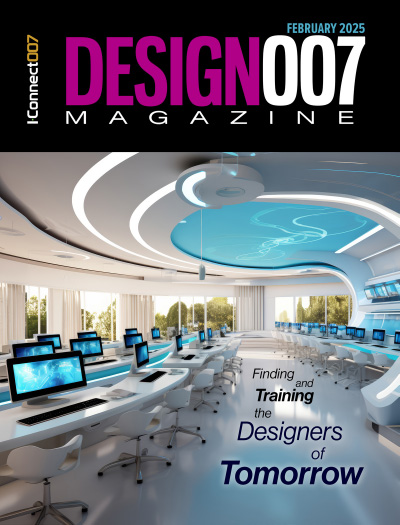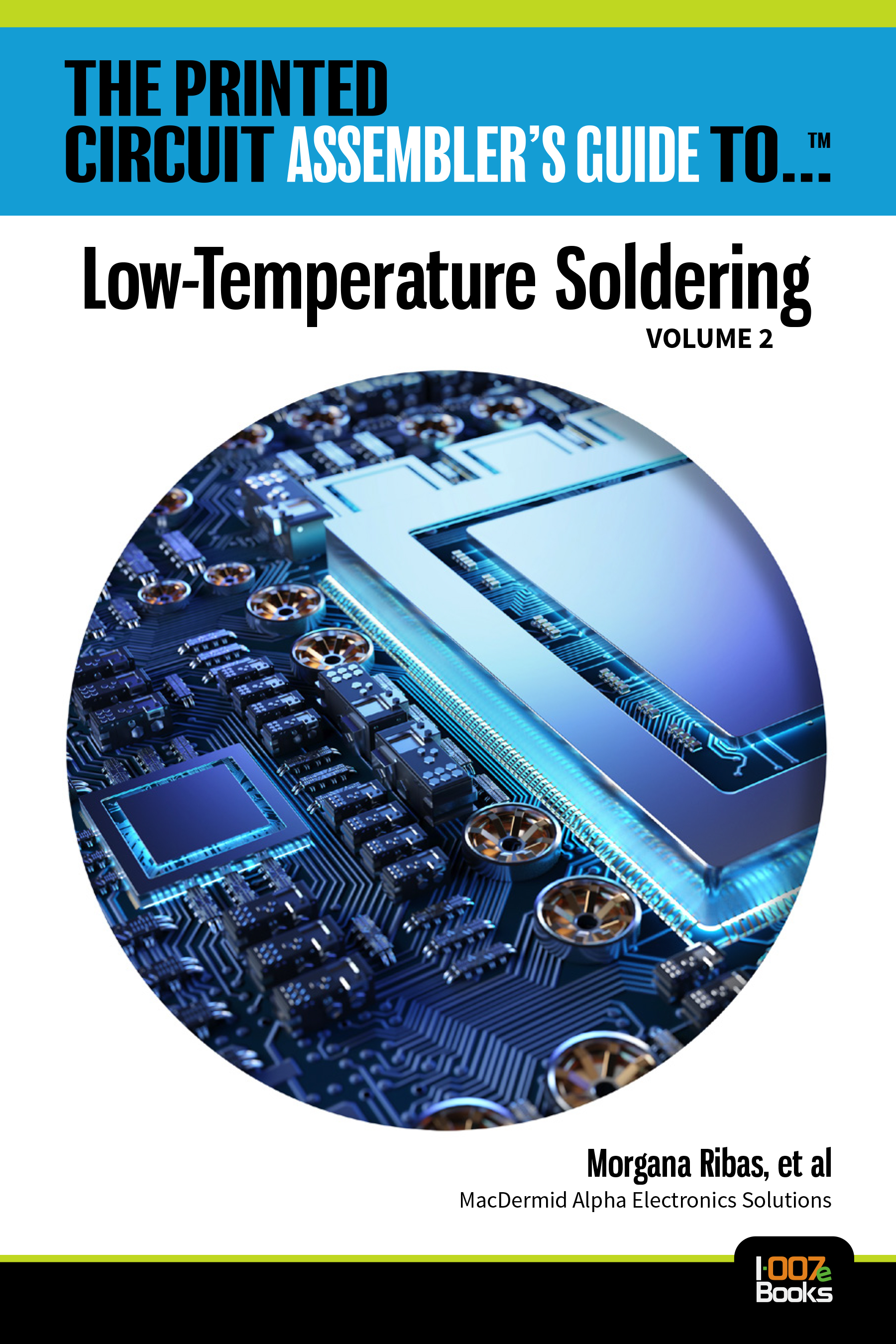-

-
News
News Highlights
- Books
Featured Books
- design007 Magazine
Latest Issues
Current Issue
Training New Designers
Where will we find the next generation of PCB designers and design engineers? Once we locate them, how will we train and educate them? What will PCB designers of the future need to master to deal with tomorrow’s technology?

The Designer of the Future
Our expert contributors peer into their crystal balls and offer their thoughts on the designers and design engineers of tomorrow, and what their jobs will look like.

Advanced Packaging and Stackup Design
This month, our expert contributors discuss the impact of advanced packaging on stackup design—from SI and DFM challenges through the variety of material tradeoffs that designers must contend with in HDI and UHDI.
- Articles
- Columns
Search Console
- Links
- Media kit
||| MENU - design007 Magazine
Real Time with… Altium Live Europe 2020: Rick Hartley’s Secrets of PCB Optimization
October 29, 2020 | Pete Starkey, I-Connect007Estimated reading time: 4 minutes
As Lawrence Romine said in his introduction, “There’s that moment when you sit in the crowd and hear Mr. Rick Hartley speak that you know you’ve arrived in PCB design.” With 50 years in the industry focused on circuit and PCB design—and as a specialist in EMI, noise, and signal integrity issues—Rick Hartley was invited to talk about PCB optimisation. But meaning what? There were a lot of things that could be optimised on a PCB.
In this particular case, Hartley was going to talk about designing boards to optimise manufacturability, with particular regard to cost-effective fabrication. I was eager to hear what he had to say, particularly having been for many years a fabricator myself, with much of my time spent talking to designers. The ones I liked best asked all the what-if questions before they began a new design. The ones who caused the most annoyance belonged to the “over-the-wall” category. It gave me enormous satisfaction to arrange for them to visit our factory then surprise them with an invitation to help manufacture what they had designed. They would say, “I never knew it was that complicated.”
Hartley made it clear that although he could easily make a really long presentation on the subject—eight hours at least—he would cover as much as he could in his conference time slot. His overarching message, which he repeated many times, was “Talk to the fabricator,” commenting, “Fabricators know their processes and know them well. If we ship them designs that make sense, that are well-thought-out, they won’t have scrap. When they have high levels of scrap, it’s because we as designers have not done our job right.” The question to ponder was, “When there’s scrap at a fab house, who do you think pays?”
He discussed some of the key items of information that a fabricator would check once a design was received for manufacture, the first of which was board size in the context of economic material utilisation. Next came the material choice, number of layers, and layers per given board thickness. There was still a common presumption that all circuit boards must be one-sixteenth of an inch (62 mils) thick, like the early single and double-sided designs and the card-guides they fitted into. He urged designers to think carefully about the consequences when nominating board thickness, commenting on the difficulty in manufacturing a 16-layer controlled impedance design to a finished thickness of 62 mils.
He recalled an early experience of working with a fabricator to optimise the finished thickness of a series of 12-layer designs, taking into account the issues of performance, ease-of-manufacture, and cost-effectiveness, arriving at a figure of 75 ±5 mils. Drilling cost obviously increased with the number of holes, but probably more significant factors were minimum hole size and aspect ratio, pad-to-hole size ratio, and power and ground plane clearance from the hole wall. IPC standards were a useful reference for clearances and tolerances.
Continuing down his list of critical parameters, he discussed minimum conductor widths and spaces, particularly in relation to copper foil thickness and copper balance layer-to-layer. Explaining at each stage the reasons for preferred and non-preferred options, he covered the topics of solder masks and component legends, final finishes, and metallisations, as well as edge connectors, controlled impedance, and design-specific features.
For guidance on actual fabrication cost, he referred to the “fabrication report card” described by Happy Holden, where each line-item was associated with a weighting factor, and low numbers were to be preferred when establishing cost per panel. Mention of cost per panel led to a discussion on preferred panel sizes and material utilisation, reminding designers that the panel also had to accommodate test coupons, tooling holes and copper-thieving in the perimeter, and room for profile-machining between individual circuits.
Again, the advice was, “Talk to the fabricators and make sure your design fits their panels and their processes.” Not forgetting the assembler, Hartley reminded designers to be aware of the keep-out areas necessary for supporting and transporting the board through the assembly process and not to fill them with components. Alternatively, put multiple small boards into a sub-panel. “Talk to the assembler as well.”Page 1 of 2
Suggested Items
Rehm Thermal Systems Brings Pioneering Manufacturing Technologies to productronica China 2025
02/11/2025 | Rehm Thermal SystemsRehm Thermal Systems will be presenting its further developments in areas such as convection soldering under vacuum, condensation soldering, coating and dispensing in Hall E4 of the Shanghai New International Expo Centre from 26 to 28 March.
Incap Slovakia Enhances SMT Quality with Automated Paste Inspection
02/07/2025 | IncapAt Incap Slovakia, quality and efficiency are at the core of our Surface Mount Technology (SMT) production. To further strengthen process control and minimise defects, we have implemented Automated Paste Inspection (API)—a high-precision system that ensures the accuracy and consistency of solder paste printing.
AIM Solder Acquires the Assets of Canfield Technologies
02/07/2025 | AIM SolderAIM Solder, a leading global manufacturer of solder assembly materials, is pleased to announce the acquisition of the assets of Canfield Technologies, a renowned producer of high-quality solders and fluxes since 1844.
Delvitech to Officially Present Hybrid AOI + SPI Horus System at IPC APEX EXPO 2025
02/06/2025 | DelvitechDelvitech is happy to announce that it will showcase its groundbreaking Horus system, the industry's first all-in-one AI native platform for both Automatic Optical Inspection (AOI) and Solder Paste Inspection (SPI), at the upcoming IPC APEX EXPO 2025. The event is scheduled from March 18 to 20, 2025, at the Anaheim Convention Center in Anaheim, California.
Dr. Jennie Hwang to Deliver Two PDCs at IPC APEX EXPO
02/04/2025 | Dr. Jennie HwangDr. Jennie Hwang, chair of the AI Committee of National Academies/DoD AI study, Chair of National AI Institute of NSF, and Committee of Strategic Thinking for Engineering Research in the Era of Artificial Intelligence of NSF, brings broad-based information and insights through an integrated perspective to the AI course.


